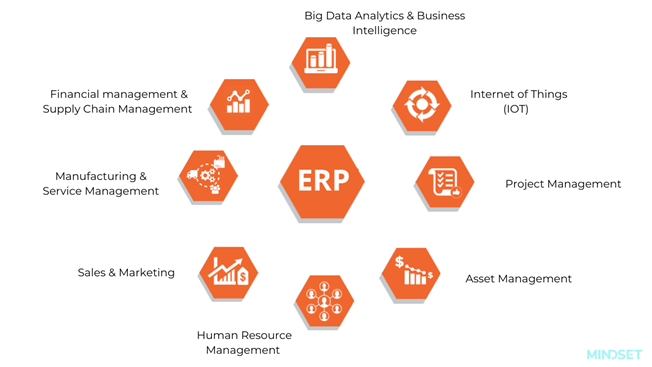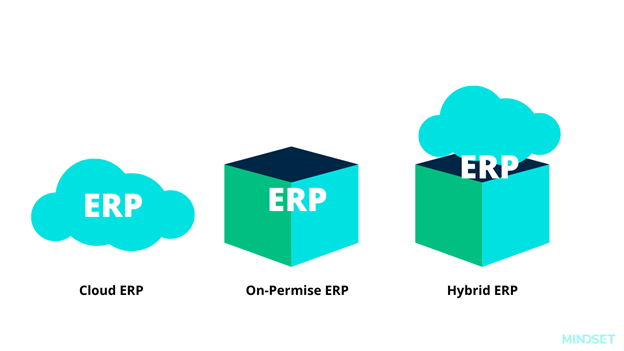Stepping out into the corporate world right after university can be exciting and overwhelming at the same time. There are a whole lot of possibilities that await you. So much to learn and experience. As I welcome our first lot of freshers to Mindset Experience India, let me start with decoding Enterprise Resource Planning (ERP).
What is ERP?
Imagine you run a company that manufactures and sells cars. What are the different activities that your company would do? You would buy components such as tires, transmissions and brakes from various suppliers. You would assemble these components, and a host of other parts, in a factory. After assembly, you would sell these cars to individuals through your dealer network or other channels.
Surely, you would need some kind of a computer application to manage all the purchases, sales and manufacturing that your business will be doing. If you were a small business manufacturing five cars a day with one factory, you could track activities with numerous Excel spreadsheets. However, imagine yourself to be a company such as Toyota or Hyundai., where you manufacture thousands of cars. You deal with thousands of suppliers who sell you hundreds of thousands of components for your assembly operation across tens of factories. You can’t possibly use excel spreadsheets to manage operations at this scale. This is where an ERP comes into play.
An ERP is a computer application that would help such a car company manage and record all its operations. This includes purchasing, sales, manufacturing and accounting in one single, integrated system.
How does ERP work?
An ERP application contains several modules built to manage different aspects of a business.
Let’s say a particular dealer sends you a request for five cars, each of which has to be of a certain configuration – three of them are petrol cars and the remaining two are diesel engine cars. Your dealer would use their ERP application to create what is known as “Purchase Orders” with detailed specifications of these five cars and send that over to you.
You will then record these demands from the dealer in your ERP application as a Sales Order. You can include the expected delivery dates of these cars. Additionally, you might include the amount the dealer would need to pay you for this order. After this step, employees in your company would use several other modules of your ERP application. For example, the inventory and supply chain management module would help your warehouse staff view existing inventory of various parts required to manufacture and assemble the five cars. The purchase module will help your Procurement staff purchase components and raw materials from your suppliers.
Once manufactured, the Quality Control department would use the Quality module of your ERP to record various quality checks and their respective results for each vehicle. Finally, when you send the five cars to the dealer who ordered them, you will send an invoice along with so that you get paid for the cars. Your finance and accounting personnel will record these payments in the Accounting module of your ERP and will generate various financial statements such as the balance sheet and profit and loss statements from the ERP system.
In addition to these functions, your company will also use the Human Resource module of your ERP application to manage your employees. This includes recruitment, performance management and their training and development. The Human Resource department would run the payroll module on predefined intervals to process the payroll of various types of employees and ensure they get paid on time.

Different Types of ERP in the Market
Any company that opts for an ERP application has a variety of hosting options when it comes to deploying the application. An ERP system deploys in three different ways.
Cloud ERP
The company may use the infrastructure of a public cloud service provider such as Amazon Web Services or Microsoft Azure to host the ERP application.
On-Premise ERP
If the company has a captive data centre and opts to host the ERP application there, such a deployment is called an “on-premise” ERP deployment. The company then needs resources to manage all infrastructure aspects of the ERP application. This includes, but is not limited to:
- Firstly, Backup and recovery
- Secondly, meeting peak demand loads by scaling
- Finally, Managing disaster recovery procedures.
Hybrid ERP
As the name suggests, a hybrid ERP deployment uses a mixture of cloud hosted and on-premise deployment model. This is typical in situations where the company opts for specialised solutions for specific modules, which are available only on a software as a service (SaaS) model and integrate these with core modules of an on-premise ERP application.

There are a few players in the market who specialize in these systems. Some of the notable examples are SAP, Oracle, Salesforce, and Microsoft. Most of these vendors provide their signature standard system. However, the company’s specific needs require customization. This is where companies like Mindset Consulting come in.
Where Mindset Fits In
As a SAP partner, Mindset offers SAP customers the possibility to customize their ERP solutions. This helps to meet their specific business and operational needs. Our experts use the proven concepts of Design Thinking. Additionally, they combine it with their deep expertise to provide unparalleled user experience. This leads to an increased adoption by the end users of the system.
As a part of the Mindset family, you will be working with a group of highly knowledgeable and experienced professionals. You will gain an understanding of how an ERP system functions. Further, you will learn how exceptional user experience (UX) can be a game-changer for our clients.
So, welcome onboard!
If you are interested in viewing similar articles, visit our blog, here.
View our LinkedIn, here.